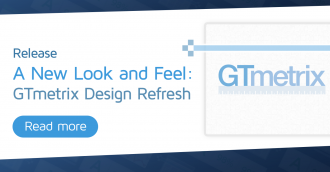This article may contain outdated material
This article only pertains to the legacy version of GTmetrix.
In this release you’ll find changes to the recommendations which may affect your PageSpeed and YSlow score.
Overview on Recommendation Updates
PageSpeed and YSlow recommendations have given us great direction thus far with regards to web performance optimization.
However, with the progression of modern web standards, we’ve had to modify and remove some recommendations to be more inline with what we see today.
Most of these updates have to do with the increased usage of HTTP/2 and other upgrades the internet has seen at large. In fact, we have already implemented some HTTP/2 modifications to our recommendations previously, and the changes below are merely an expansion of our HTTP/2 consideration.
Move to Lighthouse
GTmetrix is currently working on implementing Lighthouse scoring. While we’re in development stages for this major release, we wanted provide this intermediary update to improve our current recommendations due to the wider adoption of HTTP/2
Deprecated Recommendations
The following recommendations have been deprecated and have been removed, thus no longer affecting your PageSpeed or YSlow scores.
Minify HTML
Previous Recommendation Resource: PageSpeed – Minify HTML
Minifying HTML typically saves an additional ~10% in file transfer size¹, but since HTML page sizes are typically relatively small², the effect on overall performance is very small.
For example, a large HTML document of 52KB (unminified, but compressed) would result in an extra savings of about 5.2KB if minified. On a 1.6Mbps 3G connection, that’s only a transfer time savings of about 25 milliseconds. A more reasonable sized document of 14KB would be only saving 1.4KB in transfer size and 7ms in transfer time.
Also, unlike Javascript and CSS minification, where the content is mostly static and can be just minified once, HTML is often dynamic and thus minification would need to be done on every request. That extra processing time needed to minify the HTML could potentially negate the transfer time savings.
¹ Effects of GZipping vs. minifying HTML files
² Web Almanac – Page Weight
Specify a Vary: Accept-Encoding header
Previous Recommendation Resource: PageSpeed – Specify a Vary: Accept-Encoding header
This recommendation already had 0 impact on the PageSpeed score, thus it is completely removed now as any modern proxy should have this header integrated by now.
Optimize the order of styles and scripts
Previous Recommendation Resource: PageSpeed – Optimize the order of styles and scripts
Modern browsers (even Internet Explorer 11) no longer block the downloading of resources found in the HTML, even if they hit an external script that will block rendering.
Since all browsers block rendering when external JavaScript is hit, the order of CSS and Javascript no longer matters.
Recommendations Modified To Recognize HTTP/2
The following recommendations have been modified to recognize requests served over HTTP/2.
Combine images using CSS sprites, Inline Small CSS, Inline Small JavaScript, Make fewer HTTP requests
Previous Recommendation Resources:
- PageSpeed – Combine images using CSS Sprites
- PageSpeed – Inline Small CSS
- PageSpeed – Inline Small JavaScript
- YSlow – Make fewer HTTP requests
HTTP/2’s multiplexing mitigates issues brought forth by these issues, as requests aren’t being slowed down by HTTP/1’s per host connection limits or response queuing.
If the resource is detected to be using HTTP/2, the above recommendations will be relaxed – or in some cases will no longer trigger – as they are no longer applicable.
For YSlow’s “Make fewer HTTP requests” recommendation, we’ve bumped the request limit to 5 times the original limit if the resources are using HTTP/2.
Minimize request size and Reduce cookie size
Previous Recommendation Resources:
HTTP/2’s HPACK header compression greatly aids in reducing header size.
For example, Cloudflare’s testing showed an average 76% decrease in request header size with HTTP/2 enabled². We’ve modified these recommendations so that the size estimations will be halved if the resource is served over HTTP/2.
² HPACK: the silent killer (feature) of HTTP/2
Let us know if you run across any bugs or issues and feel free to tell us your thoughts on Twitter (@gtmetrix) or contact us.
Test with different countries, speeds and options
Get access to more Test Locations, Analysis Options and Connection Speeds!
Sign up for a Basic GTmetrix account and see how your site performs in more scenarios – It’s FREE!




